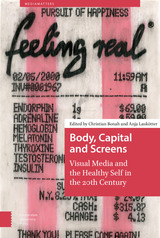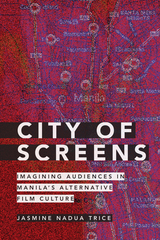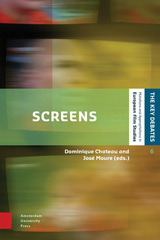4 books about Screens

Body, Capital and Screens
Visual Media and the Healthy Self in the 20th Century
Christian Bonah
Amsterdam University Press, 2020
Visual Media and the Healthy Self in the 20th Century brings together new research from leading scholars from Europe and North America working at the intersection of film and media studies and social and cultural history of the body. The volume focuses on visual media in the twentieth century in Europe and the U.S. that informed and educated people about life and health as well as practices improving them. Through a series of in-depth case studies, the contributors to this volume investigate the relationships between film/television, private and public actors of the health sector and economic developments. The book explores the performative and interactive power of these visual media on individual health understandings, perceptions and practices. Visual Media and the Healthy Self in the 20th Century aims to better understand how bodily health has evolved as a form of capital throughout the century.
[more]

City of Screens
Imagining Audiences in Manila's Alternative Film Culture
Jasmine Nadua Trice
Duke University Press, 2021
In City of Screens Jasmine Nadua Trice examines the politics of cinema circulation in early-2000s Manila. She traces Manila's cinema landscape by focusing on the primary locations of film exhibition and distribution: the pirated DVD district, mall multiplexes, art-house cinemas, the university film institute, and state-sponsored cinematheques. In the wake of digital media piracy and the decline of the local commercial film industry, the rising independent cinema movement has been a site of contestation between filmmakers and the state, each constructing different notions of a prospective, national public film audience. Discourses around audiences become more salient given that films by independent Philippine filmmakers are seldom screened to domestic audiences, despite their international success. City of Screens provides a deeper understanding of the debates about the competing roles of the film industry, the public, and the state in national culture in the Philippines and beyond.
[more]

Screens
Edited by Dominique Chateau and José Moure
Amsterdam University Press, 2016
We live in an era of screens. No longer just the place where we view movies, or watch TV at night, screens are now ubiquitous, the source of the majority of information we consume daily, and a crucial component of our basic interactions with colleagues, friends, and family. This transformation has happened almost without us realizing it-and certainly without the full theoretical and intellectual analysis it deserves.Screens brings together scholars from a variety of disciplines to analyse the growing presence and place of screens in our lives today. They tackle such topics as the archaeology of screens, film and media theories about our interactions with them, their use in contemporary art, and the new avenues they open up for showing films and other media in non-traditional venues.
[more]

Screens
Viewing Media Installation Art
Kate Mondloch
University of Minnesota Press, 2010
Media screens—film, video, and computer screens—have increasingly pervaded both artistic production and everyday life since the 1960s. Yet the nature of viewing artworks made from these media, along with their subjective effects, remains largely unexplored. Screens addresses this gap, offering a historical and theoretical framework for understanding screen-reliant installation art and the spectatorship it evokes.
Examining a range of installations created over the past fifty years that investigate the rich terrain between the sculptural and the cinematic, including works by artists such as Eija-Liisa Ahtila, Doug Aitken, Peter Campus, Dan Graham, VALIE EXPORT, Bruce Nauman, and Michael Snow, Kate Mondloch traces the construction of screen spectatorship in art from the seminal film and video installations of the 1960s and 1970s to the new media artworks of today’s digital culture.
Mondloch identifies a momentous shift in contemporary art that challenges key premises of spectatorship brought about by technological objects that literally and metaphorically filter the subject’s field of vision. As a result she proposes that contemporary viewers are, quite literally, screen subjects and offers the unique critical leverage of art as an alternative way to understand media culture and contemporary visuality.
[more]
READERS
Browse our collection.
PUBLISHERS
See BiblioVault's publisher services.
STUDENT SERVICES
Files for college accessibility offices.
UChicago Accessibility Resources
home | accessibility | search | about | contact us
BiblioVault ® 2001 - 2024
The University of Chicago Press









